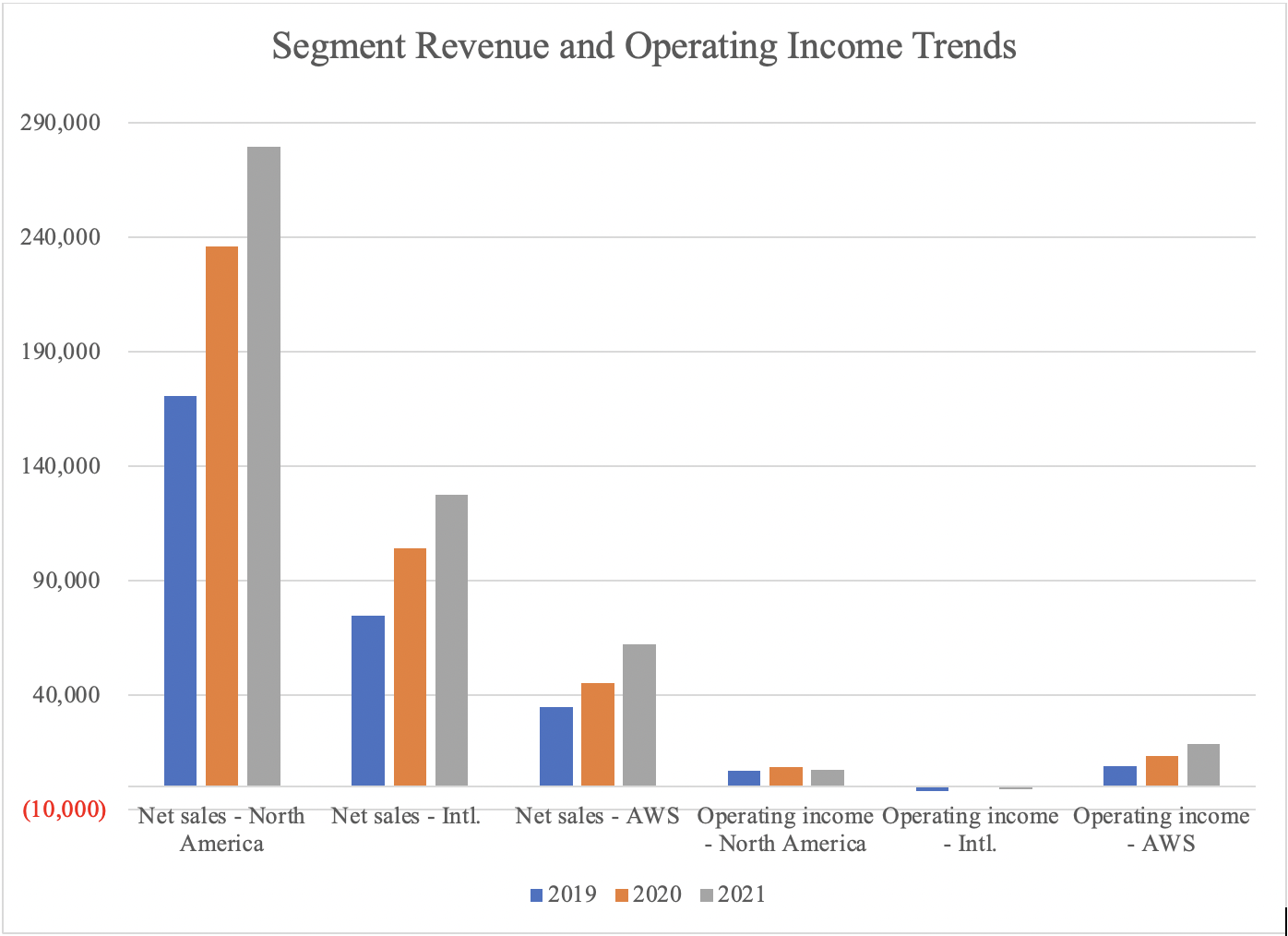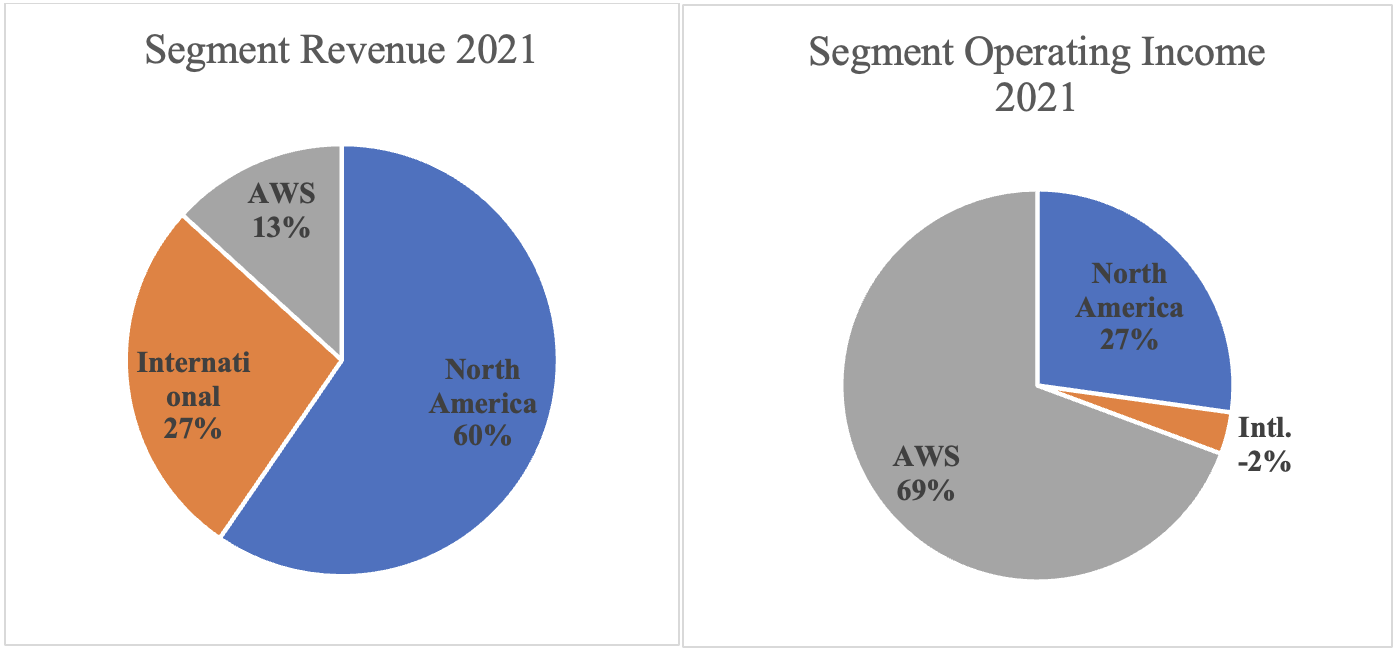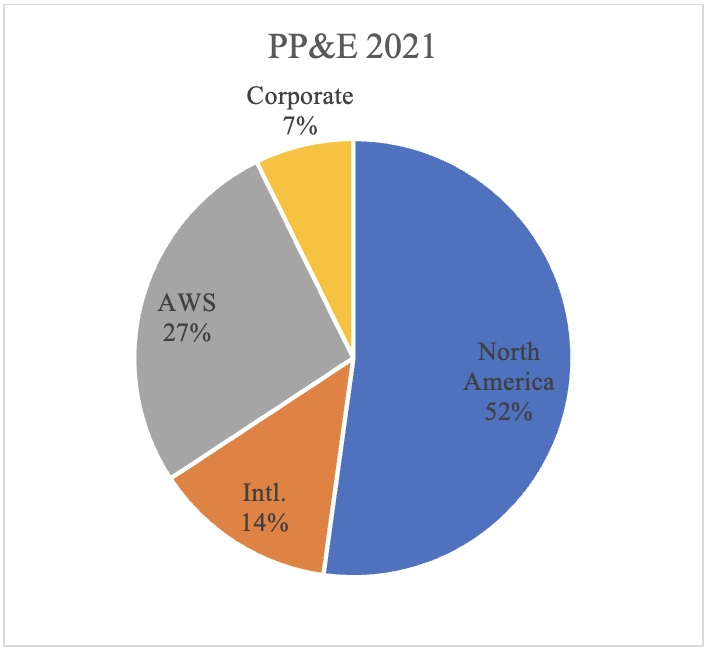Amazon.com is often on our mind here at Calcbench because it’s such a fascinating source of financial reporting nuance. In 2018 we told you about an SEC comment letter Amazon received, prodding the company about disclosing the number of Prime members. In 2020 we compared AWS (Amazon Web Services) to Microsoft’s Intelligent Cloud.
Today we want to look at Amazon’s ($AMZN) latest 10-K filing, which arrived on Feb. 4. Specifically, we want to examine the company’s segment footnote.
Amazon recognizes three operating segments: North America and International, which are both retail segments; plus AWS, its cloud-hosting segment. So for practical purposes Amazon really operates as two halves: its retail operations and AWS.
Let’s start by examining the trends in both revenue and operating income for the segments. As you can in the chart below, revenues for all three segments seem to be increasing substantially in the last three years.

At first glance this might look quite promising, but if you squint at the operating income numbers you see another story. Operating income has declined for both the North America and International segments (it’s actually negative for the International segment), and has increased for AWS.
This made us wonder: How significant is AWS for Amazon, in revenue and operating income? Very significant, apparently. As you can see from the charts below, although AWS accounts for only 13 percent of Amazon’s revenue, it accounts for 69 percent of the company’s operating income.

Fair enough, but more questions come next. Generating all that income requires assets, so how much Property, Plant, and Equipment (PP&E) do each of Amazon’s operating segments have? Well, Figure 3, below, shows that the North America segment has 52 percent of all PP&E, while AWS has only 27 percent.

Using operating income as a proxy for net income, and using PP&E as a proxy for operating assets, we can calculate the return on operating assets (ROOA) for each segment and the sales generated by those assets— a metric known as asset turnover.
As you can see in Table 1, below, AWS has an extremely high ROOA, but much lower asset turnover. That’s because AWS needs lots of hardware to support all that computing power.

So there you have it: the best of times and the worst of times for Amazon. It begs the question: Is retail a tale of the past and computing a tale of the future?